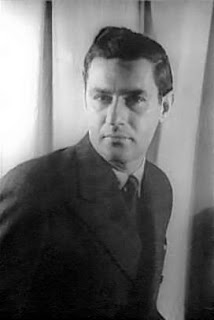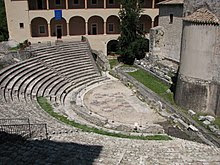The death of Hadrian
Legacy of emperor famous for wall across Britain
The Roman emperor Hadrian, famous for ordering the construction of a wall to keep barbarians from entering Roman Britain, died on this day in 138 AD. Aged about 62, he is thought to have been suffering from heart failure and passed away at his villa at Baiae – now Baia – on the northern shore of the Bay of Naples. Hadrian was regarded as the third of the five so-called "Good Emperors", a term coined by the political philosopher Niccolò Machiavelli, who noted that while most emperors to succeed to the throne by birth were “bad” in his view, there was a run of five - Nerva, Trajan, Hadrian, Antoninus Pius and Marcus Aurelius – who all succeeded by adoption, who enjoyed the reputation as benevolent dictators. They governed by earning the good will of their subjects. It is accepted that Hadrian came from a family with its roots in Hispania. His birthplace is thought to have been the city of Italica Hispania – on the site of what is now Seville. His predecessor, Trajan, a maternal cousin of Hadrian's father, did not designate an heir officially and it is thought that his wife, Plotina, signed the papers of succession, claiming that Trajan had named Hadrian emperor immediately before his death. Read more…
__________________________________________________________
Caterina Cornaro – Queen of Cyprus
Monarch lived out her last years in 'sweet idleness'
The last ruler of the Kingdom of Cyprus, Caterina Cornaro, died on this day in 1510 in Venice. She had been living out her life in a castle in Asolo, a pretty town in the Veneto, after the Venetian Government persuaded her to abdicate as Queen of Cyprus. Her court at the castle became a centre of literary and artistic excellence as she spent her days in what has been described as ‘sweet idleness,’ a translation of the verb asolare, invented by the poet Pietro Bembo to describe her daily life in the town. Caterina was born in 1406 into the noble Cornaro family, which had produced four Doges, and she grew up in the family palace on the Grand Canal. The family had a long trading and business association with Cyprus. Caterina was married by proxy to King James II of Cyprus in 1468, securing commercial rights and privileges for Venice in Cyprus. In 1472 she set sail for Cyprus and married James in person at Famagusta. James died soon after the wedding and Caterina, who was by then pregnant, became regent of the kingdom, as was specified in his will. She was imprisoned briefly, after Cyprus was seized by the Archbishop of Nicosia, but restored to continue ruling after a military intervention by Venice. Read more…
___________________________________________________________
Calogero Vizzini - Mafia chieftain
‘Man of Honour’ installed as Mayor by Allies
The Sicilian Mafia boss Calogero Vizzini, known as Don Calò, died on this day in 1954 in Villalba, a small town in the centre of the island about 100km (62 miles) southeast of the capital, Palermo. He was 76 and had been in declining health. He was in an ambulance that was taking him home from a clinic in Palermo and was just entering the town when he passed away. His funeral was attended by thousands of peasants dressed in black and a number of politicians as well as priests played active roles in the service. One of his pallbearers was Don Francesco Paolo Bontade, a powerful mafioso from Palermo. Although he had a criminal past, Don Calò acquired the reputation as an old-fashioned ‘man of honour’, whose position became that of community leader, a man to whom people looked to settle disputes and to maintain order and peace through his power. In rural Sicily, such figures commanded much greater respect than politicians or policemen, many of whom were corrupt. In his own words, in a newspaper interview in 1949, his view of the world was that “in every society there has to be a category of people who straighten things out when situations get complicated. Read more…
























